There’s something truly magical about being surrounded by fresh air and majestic peaks that makes even the toughest fishing days worthwhile.
When you first fish a lake in the mountains, it can be overwhelming. So much water, so many possibilities. Sometimes, they don’t even contain trout. Where to even start? I personally, I like to focus on the shore and ignore the unreachable middle of the lake. I treat the lake’s shore as if it were the banks of a tranquil, slow-flowing river.
Mountain lakes have their unique charm, distinct from their lower-elevation counterparts. The most significant disparity lies in the water’s persistent coldness. It is cold year round. These trout have no worries about warm water.
That’s the beauty of it: even on scorching summer days, the trout remain in a feeding mood. In fact, in some exceptionally chilly lakes, hotter weather might even encourage them to the shallows where the sun warms the water, creating a cozy spot for them to indulge in their culinary desires.
So, whether you’re battling the elements or embracing a sweltering day, remember that these mountain lakes hold surprises and opportunities aplenty. The cold waters, the stunning landscapes, and the cunning brown trout await your arrival. Let’s embark on this adventure together, where fishing becomes an art form and every cast holds the promise of a thrilling catch!

Where to Find Brown Trout in Mountain Lakes
- Shallows and Flats: In my opinion the best location to spot trout in mountain lakes are in the shallows and flats. They are there because the water is warm, which in turn causes the aquatic life to become more active. Simply put there is more food available for them to hunt. As to what they’re hunting, well, I can only assume it’s worms, snails and other aquatic insects such as hatching mayflies. Believe it or not, some of the biggest trout I’ve caught have been lurking in only a couple of feet of water.
- Shoreline Weed Banks: It turns out weed banks are like an all-you-can-eat buffet for our finned friends. Teeming with snails, crustaceans, baitfish, and insects, there are a prime spot to spot feeding trout. Late in the summer, you’ll often find brown trout leisurely strolling along the weed lines, scouting for an easy meal.
- Stream Mouths and Outlets: Trout love moving water! So, even in lakes trout are attracted to current. This means stream mouths and outlets! During the fall months trout also gather there in mass in preparation for their spawning runs. Try fishing a streamer angled from the shore.
I am now going to break down several mountain lakes and highlight the areas more likely to hold feeding trout.
Case Study 1
Case Study 1 is a small alpine lake high in the Colorado mountains, technically I believe this lake holds predominantly Rainbow trout but the same principles apply.
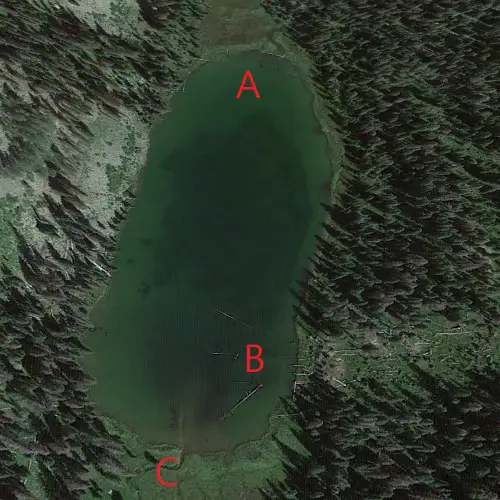
I suggest fishing such a lake in the Summer or Fall, it certainly freezes over during the winter and there is at least one avalanche path (B) which makes it unsafe to fish when there is heavy snow coverage.
The most obvious feature is the shallow shorelines, but it surrounds the entire lake so are unlikely to cause feeding trout to concentrate. Let’s now break down the key features.
- Site A is a small inlet stream, all trout love flowing water so they will likely concentrate around the inflow. During the spawn, trout are likely to mass there.
- Site B represents the debris of an old avalanche path. The Avalanche pushed several trees out into the lake where they now provide shelter and protection to the fish. Trout will likely shelter among the fallen trees and move out into the shallows to feed. That southeast corner is where I will concentrate most of my efforts.
- Site C is the outlet. While small the outlet, also happens to be fairly close to the sunken trees. If not disturbed by other anglers, it is very likely to find trout feeding in and around the outlet stream.
Case Study B
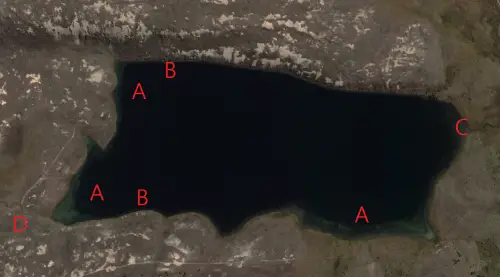
This time we are going to look at a much deeper lake. This lake does indeed hold brown trout. To the North, there is a steep slope, almost a cliff leading into the lake. While the slopes on the other three sides are much more gradual.
- Site A indicates the shallows. This is the first part of the lake which starts to warm and the trout know it. Target the shallow’s in the spring or early summer and first thing in the morning. The shallow water can make it is easy to spot trout, but the reverse is also true so always try and keep a low profile. Take your time, and be aware that multiple trout might be feeding nearby. A perfect presentation to one trout can easily spook its nearby friend which can send them all darting away to the depths.
- Site B is a bit hard to see in the photo, but it marks weed beds. The deeper water close to shore allow weeds to grow out of reach dabbling birds. The weed in this lake basically stretches the entire northern shoreline and about half of the southern shore between the two shallows. The weedbeds, normally fish best once the lake has warmed slightly usualy later in the Summer into the fall.
- Site C is the outlet, it is no secret that trout love flowing water so trout will likely gather there. If you look carefully, this lake does not have an inlet stream, the source basically seeps through the marshy edge.
- Site D indicates the main access route. This is where 99% of anglers start fishing. It is also the part of the lake which sees by far the most pressure. The trout here are more likely to be wary of fishermen. Water near site D is best fished very early in the morning before other fishermen start their day.
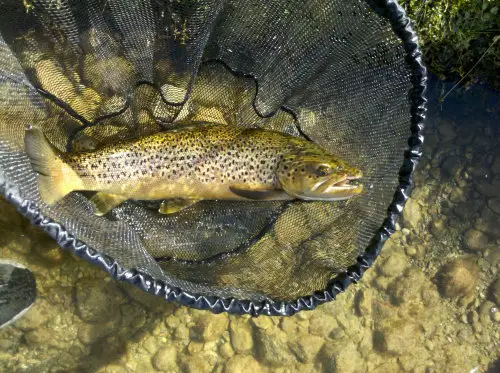
Spinning for trout in Mountain lakes.
Spinning is one of the most efficient methods for fishing mountain lakes. A lot of water can be covered extremely quickly. It is also easier to cast a spinning rod on a windy day than it is to cast a fly rod.
The secrets to spinning in mountain lakes is to use lightweight tackle and small lures. I like to work the edges with a Rapala F05. Brown trout often work weed banks near the shore. Cast out, and along and swim the minnow parallel to the weed. Stop occasionally and jerk it. I prefer dark, natural patterns. I favor Rapalas, but any thin floating jerkbait style of lure should work.
I do not fish inline spinners much in lakes. When I do I go small. Like with jerkbaits, work the edges where most trout feed.
When trout are holding far from the shore, or the wind is making casting difficult, it is time to use spoons. There are plenty of options. My first choice will be a long-distance casting spoon such as a Kastmaster, Krocodile, or Thomas Speedy Shiner.
Australians made Tasmanian Devils or Cobra’s also work well, and wary American trout are unlikely to have seen them before. When trout see a lot of pressure, I like to use unusual lures because I believe trout can start to recognize regularly fished lures. The internet makes buying trout lures even easier.
When the wind is extra bad an Acme Kastmaster or a hex spinner is excellent at punching into it.
Fly fishing in mountain lakes
My favorite way to fish a mountain lake is with a fly rod.
Some of my best trout fishing memories is fishing on them. I work the shoreline like its one side of a river. I prefer to sight and stalk the trout. My fly fishing setup of choice is to use a dry fly as an indicator, and run a small nymph underneath. This combination works for me everywhere in the world I have trout fished.
I always try to keep a low profile and avoid casting my shadow over the water. At times I climb the surrounding banks to more easily see any cruising trout. If I spot a trout, I stay as still as possible (hopefully I remembered my insect repellent).
When the trout starts swimming away, I will sneak down and get into casting position. I wait until the trout loops around, and attempt to expertly place my flies about a yard in front (assuming my backcast did not tangle the vegetation behind).
The exact dry fly and nymph to use vary somewhat with the location. Personally, I find size is more important than the exact model. I typically use Mayfly imitating flies such as a Royal Wullf or Parachute Adams in #12-#18. I also love to use a black gnat as an indicator, around #10-#14.
I just stick with the more traditional nymph patterns such as small size Pheasant Tails or Hare ears.
When fishing streamers, I really like woolly buggers or rabbit strip flies in sizes #6-#12.
Trolling for trout in mountain lakes
I do not troll mountain lakes as often as I should. Partly, because my favorite lakes are foot access only. There is no way I am hauling a kayak several miles up the side of a mountain. I also much prefer to fish the shallows rather than out in the middle. Even then, I have learned a trick or two over the years.
Troll slow, and causes as little disturbance as possible. I like to slowly paddle my fishing kayak. I troll my lure very far back. Maybe over 100 yards. This prevents the chances of my paddling spooking the trout. I then paddle in a zigzag pattern. That way my lure cuts the corners and travels across parts of the lake I did not directly paddle over.
My favorite trolling lure in shallow lakes is a floating jerkbait. I typically use Rapalas because that is what I use for spinning. You know the trolling speed is good by monitoring the rod tip vibrating. Alternatively, I will use a small flatfish.
For trolling deeper water, I prefer sinking jerkbaits, or I will add some split-shot or a small weight in front of my floating Rapala.
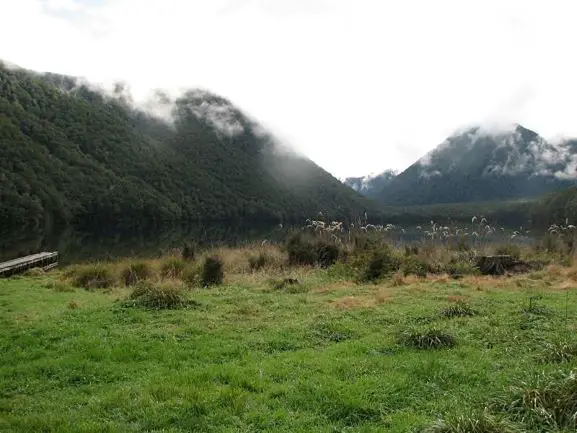
Importance of weather
At higher elevations it is usually colder and windier than closer to sea level. This can make fishing mountain lakes more challenging. Throughout the year often chilly breezes flow down the valleys, and across the peaks roughing up the surface the lakes.
This wind can make casting difficult, and sight fishing almost impossible. It also results in greatly reduced fishing pressure because it is simply not as enjoyable fishing when a cold wind is blowing.
Always check the forecast before heading into the mountains. I enjoy sight fishing, so I only make the effort to reach my local lakes when there is no wind in the forecast. That might only be half a dozen weekends every season, but is certainly be worth the effort.
How does wind direction affect the fishing?
Eventually, you will arrive at a mountain lake. Rather than being greeted by a pristine mirrorlike surface, you will face a foot high chop capped with little white caps.
My passion is sight fishing. Wind makes it harder to spot cruising trout. I prefer fishing on the leeward side to take advantage of calmer water and a back wind. Even on the windiest days, there are trout to catch. It is a great time to try fishing large terrestrial flies because they frequently get blown onto the lake.
Is it better fish for brown trout on the leeward or windward side of a mountain lake? I have heard many arguments supporting both sides. Many fishermen like to fish facing into the wind.
After one successful morning, I overheard a couple of elderly fly fishermen complaining it was too calm, and that they will wait for the wind to pick up before they started fishing again. Apparently, the trout could see them too easily when the lake was flat. They wanted some chop on the water.
One very experience fly-fishing guide I know prefers to cast into the wind. His casting is much better than mine. He believes the waves disturb the bottom, washing insect life out of the weeds and mud. The trout know so they start to feed there. He catches plenty of fish.
I also heard more far-fetched theories on how the wind blows oxygen poor water to the windward end of the lake. So the trout move away to escape it… I find that one hard to believe, firstly the Eutrophic water is normally near the bottom. Only the bottom of a very shallow lake will get mixed at all by the waves. Secondly, wave action normally increases oxygen levels so the windward side should have increased oxygen level.
I personally believe the trout do not really care. They will continue to live and feed in their normal beats. If you have the skills to cast and fish the windward or leeward sides, then go ahead. The trout can not feel the wind blow underwater.
Importance of seasons
Winter lasts longer high in the mountains and it is more severe. To gain condition, mountain lake trout feed even aggressively over the brief summer months. Come fall, at times they are grubbing at anything even slightly resembling food.
Spring
Spring arrives late in the Mountains. Sometimes, the lakes remain frozen late into May.
When the thaw does occur, spring in the mountains is a time of breathtaking beauty, blooming flowers, and snow-crowned peaks. The streams, run cold with the last of the snowmelt.
Nights are below freezing, and mornings frosty. The days quickly warm.
In the lakes, the water is still cold, and the trout can be sluggish. They are in poor condition; they have spent their reserves on spawning runs, made even harder because of the lean winter months.
Due to the cold conditions trout are unlikely to feed until the water warms. This might be from direct sunlight in the morning, but more often the best fishing does not occur until around midday and lasts throughout the afternoon and into the evening.
The trout are not normally fussy, food is scarce, and they are keen to recover condition.
Summer.
Over the summer mountain lakes are full of life, mayfly hatches are common. Dragon and damselflies patrol the shoreline, and their nymphs hunt below.
It is a time of plenty for the trout. They feed throughout the day and night. While trout in low laying lakes and streams might suffer from warm water conditions, the mountain lakes generally stay cold.
At this time of year great fishing can be had with terrestrial flies. I like to fly fish along the shoreline, using a black gnat as an indicator with a nymph suspending a couple of feet below.
Fall/Autumn
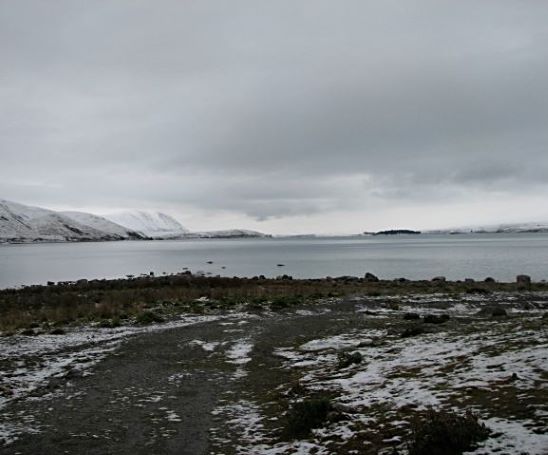
At this time of year, the trout only have food on their minds. They need to eat as much as possible, and to carry as much condition into winter as possible. The trout are often fat, and plump. They prey on energy rich insects and small fish alike. They are less fussy.
Around the time of the first frost, the mood changes. As the water temperature drops to around 44°F to 48°F mature brown trout get the urge to spawn. They swim up the feeder streams, in search of gravel beds to make their redds. Hungry trout often lay in wait to eat any eggs dislodged into the current. With spawning done, the trout drift back downstream. They are thin and weak, many will not survive.
Winter
At the start of winter the water is temperature is barely above freezing. Ice forms around the edges. The trout slow down and become sluggish.
As the cold grows stronger, the ice thickens, eventfully covering the entire lake surface. The Trout retreat to deeper water to wait out the coldest months, although in the warmth of the afternoons they still might venture into the shallows to forage for food.
Feeding does continue beneath the ice but the trout do lose condition. Only the toughest of anglers brave the winter conditions to catch trout through the ice on mountain lakes.

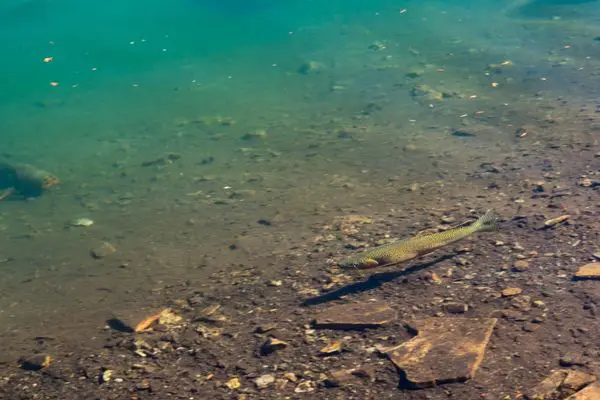
GREAT INFORMATION ! THANK YOU